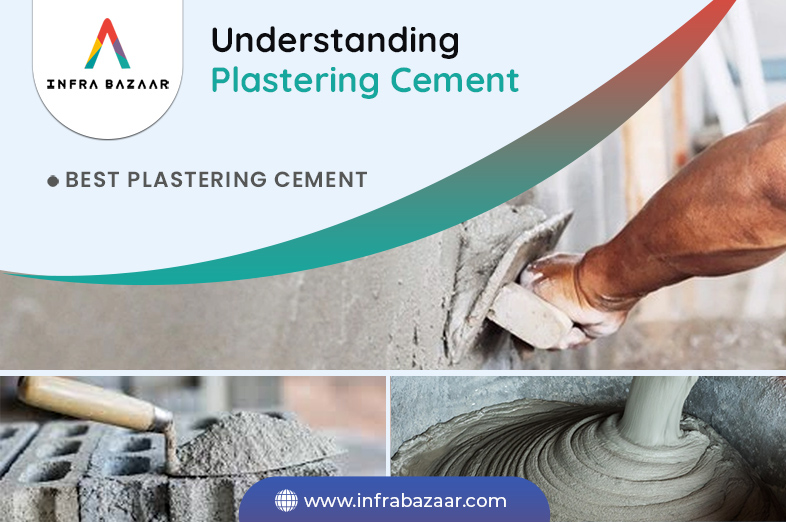
Posted By:Infra Bazaar
Plastering is a crucial part of any construction and this is the very process that defines a building's design and acts as a safeguard from the natural elements.
The cement that is utilized in plastering, is expected to give the wall the design it deserves whilst adding strength to the outer layer of the building.
INFRABAZAAR.COM takes a look at different types of cement which are often used for plastering and discusses exactly why?
Best Plastering Cement
There are various sorts of cement available in the world of construction, and among them the commonly preferred ones are:
OPC or ordinary hydraulic cement made from 95% cement clinkers along with 5% gypsum
PPC or pozzolana hydraulic cement made from 75% to 77% cement clinkers along with 20% ash added with 3% to 5% of gypsum
PSC or Portland Slag Cement is formed by adding 5% to 6% of blasting furnace slag along with the cement clinkers.
Out of those, the OPC is the best cement for plastering work and is commonly referred to as plastering cement, thanks to its quality of offering immediate strength to the plastering mix and its capacity to retain its original form and strength for many years to come.
Ordinary hydraulic cement is out there in three grades of 33, 43, and 53, which are the numbers that indicate the compressive strength of the cement.
Ideal for plastering buildings, the cement used to have high compressive strength and for this, hence grades 43 and 53 of the OPC are the foremost suitable ones.
The OPC 43 grade is ideal for plastering the low-rise residential and commercial buildings while it's the 53 grade that's chosen for plastering within the high rise and important projects like dams, underwater structures, etc.
Why Choose Opc Or Ordinary Hydraulic Cement For Plastering?
The OPC 43 and 53 are selected for plastering works thanks to the subsequent reasons:
Its high compressive strength provides the plastering mixture with the strength to stay on to the wall surface and remain there as soon because the plastering is applied to the wall
Its ability to make a crack-free surface as this cement can form a consistent, smooth, and even surface for covering the masonry work
It’s the ability to be used easily on the walls because it can exhibit a high initial strength to the plastering mixture as soon because it is mixed with water
The smaller and fine granular size can mix with sand making the plastering mix smooth and even for straightforward and effective application on the surface to be plastered
High resistance to chemical exposure and therefore the anti-corrosive behaviour that creates the OPC, is the simplest choice for plastering dams, canals, and other underwater structures for them to withstand much longer against the reaction of chemicals, salt, and other soluble materials found in water.
Thus, the standard hydraulic cement grades 43 and 53 are the simplest cement for plastering in India. Although other kinds of cement are used for plastering, using OPC Cement of an appropriate grade to offer, is the simplest possible look and protection to your construction.
Other than the sort of cement to be used for concrete slab construction, one should choose the simplest cement companies in India. The proper sort of cement, correct grade and best cement company are all you would like to form the simplest decision.
#plasteringcement #ordinaryhydrauliccement #OPCcement #PPCcement #PSCcement #compressivestrength #crackfreesurface #chemicalresistance #constructionmaterials #bestcementcompany #infrabazaar